Japan: 16 Iconic Temples And Shrines You Need To Visit
In a country where bullet trains rush by neon lights, it’s the quiet corners that leave the deepest mark. Japan’s temples and shrines feel like stepping into another world—still, sacred, and timeless. They’re not just places to admire, they invite you to pause and breathe.
From moss-covered stone paths to towering gates that whisper old legends, these spots offer more than just beauty. They carry the spirit of Japan’s past, still very much alive. Ready to discover the places where history and serenity meet?
1. Kinkaku-ji (Golden Pavilion)
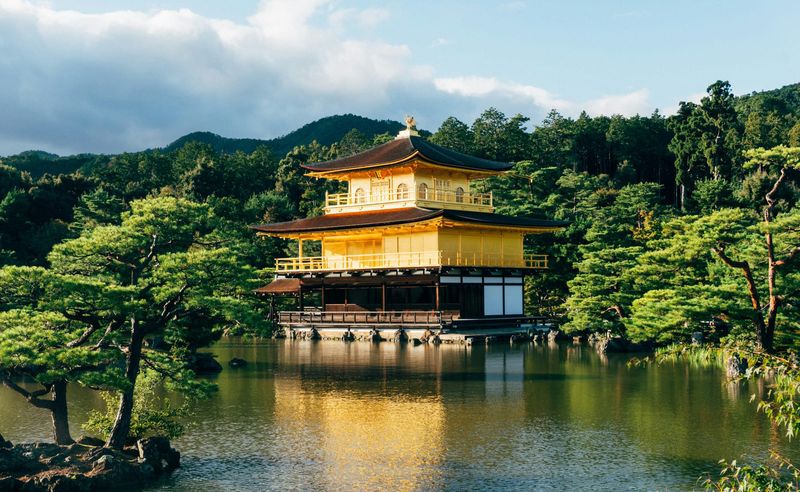
Gleaming in the sunlight, Kinkaku-ji’s gold-leaf exterior creates a dazzling reflection on the surrounding pond that will take your breath away.
This three-story Zen Buddhist temple in Kyoto wasn’t always golden – its current appearance dates to a 1955 reconstruction after a mentally troubled monk burned the original to the ground. The pavilion houses sacred Buddha relics, with each floor representing a different architectural style.
Walking through the meticulously maintained gardens feels like stepping into a living painting. If you visit in autumn or winter, you might catch the golden structure against fiery maple leaves or dusted with snow – both scenes that appear on countless postcards throughout Japan.
2. Fushimi Inari Taisha
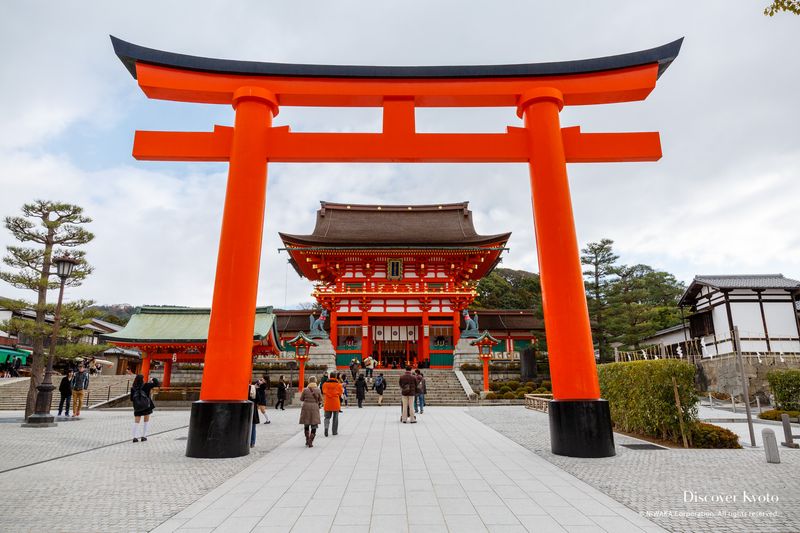
Thousands of vermilion torii gates create a mesmerizing tunnel-like path up Mount Inari. This iconic Shinto shrine dedicated to Inari, the god of rice, business, and prosperity, draws visitors with its striking visual impact and spiritual significance.
What makes this place special isn’t just the famous gates but the entire sacred mountain behind them. The complete hiking trail takes about 2-3 hours, winding past smaller shrines, stone fox statues (Inari’s messengers), and peaceful forest sections where few tourists venture.
Many visitors only walk through the densely packed gates near the entrance, so heading further up rewards you with quieter paths and authentic shrine experiences without the crowds.
3. Sensō-ji
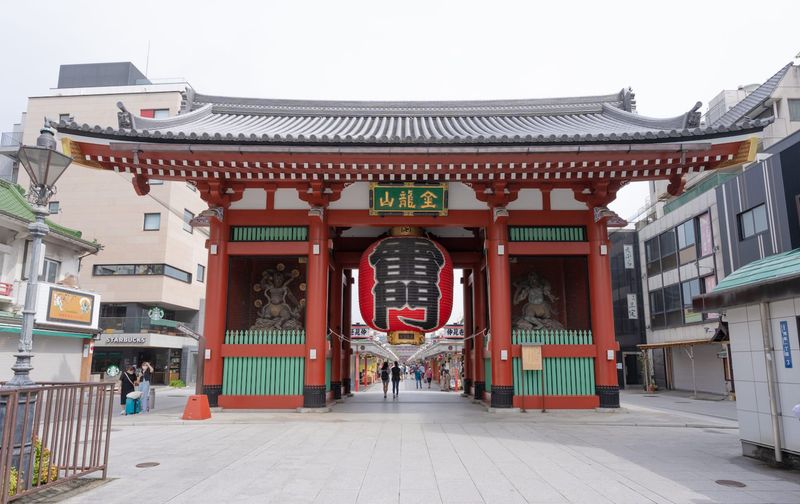
Tokyo’s oldest temple greets you with the massive Thunder Gate (Kaminarimon) and its giant red lantern that’s become a symbol of the city itself. Beyond this entrance stretches Nakamise Shopping Street, a lively 250-meter path lined with stalls selling traditional snacks, crafts and souvenirs.
The main hall houses a golden image of Kannon (goddess of mercy) that, according to legend, was pulled from the Sumida River by fishermen in 628 CE. Despite being Tokyo’s most visited spiritual site, you can still find quiet corners in the temple grounds.
Don’t miss the incense burner near the main hall where visitors waft smoke over themselves – tradition says the smoke brings good health to whatever body part it touches.
4. Kiyomizu-dera
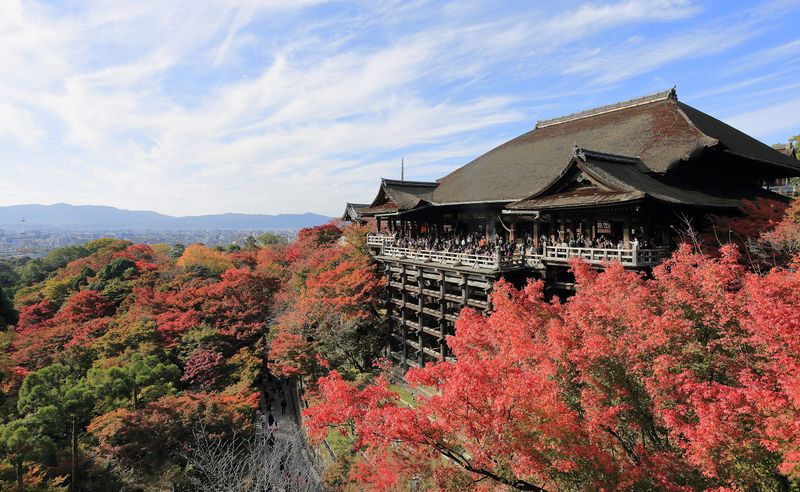
Perched dramatically on Kyoto’s eastern hills, this wooden temple seems to float above a sea of maple and cherry trees. Its name means “Pure Water Temple,” referring to the sacred Otowa Waterfall that flows beneath the main hall.
The temple’s wooden stage extends 13 meters over the hillside without using a single nail – an engineering marvel from Japan’s Edo period.
From this stage, you can gaze across Kyoto’s cityscape while imagining the old tradition where people would jump off the platform, believing surviving the 13-meter drop would grant their wishes.
Head to the Otowa Waterfall where three channels of water are said to bring different blessings: longevity, success in school, or a fortunate love life. Choose wisely though – drinking from all three is considered greedy!
5. Todai-ji
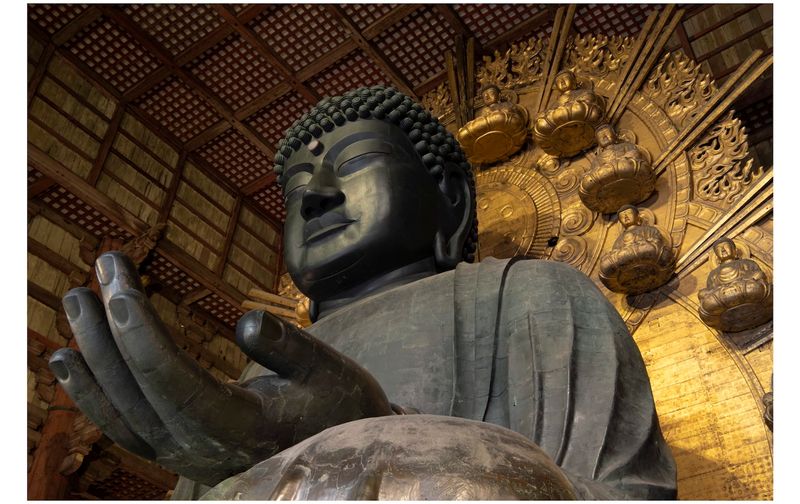
Home to the world’s largest bronze Buddha statue, Todai-ji in Nara will make you feel tiny the moment you step inside. The Daibutsuden (Great Buddha Hall) housing this 15-meter tall seated Buddha is itself one of the largest wooden buildings on earth, despite being rebuilt in 1709 at only two-thirds its original size!
Wild deer considered sacred messengers of the gods roam freely throughout the temple grounds and surrounding park. They’ll bow their heads when they want a snack – special deer crackers sold by vendors nearby.
Look for the wooden pillar with a hole at its base the same size as the Great Buddha’s nostril. Legend says those who can squeeze through will be blessed with enlightenment in their next life – children eagerly attempt this while adults watch in amusement.
6. Itsukushima Shrine
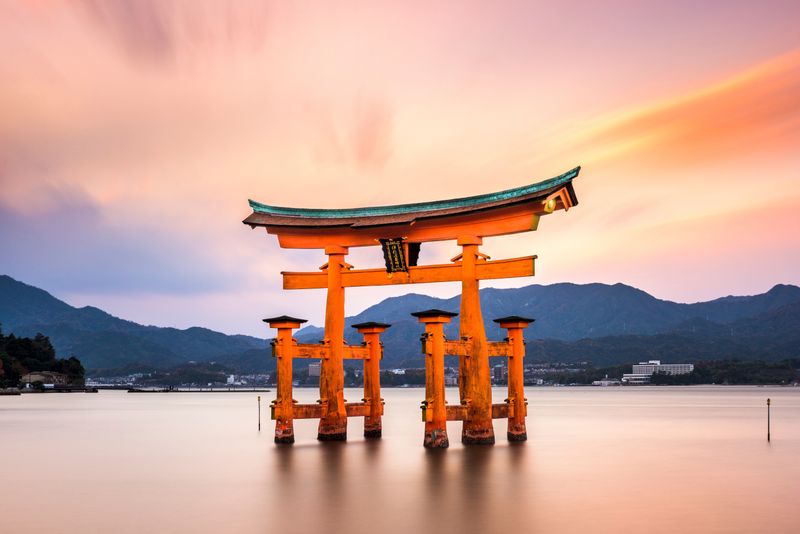
Rising from the waters of the Seto Inland Sea, the “floating” torii gate of Itsukushima creates one of Japan’s most magical views. This vermilion shrine complex on Miyajima Island was built on stilts over the water to preserve the island’s sacred status – historically, commoners couldn’t set foot directly on this holy ground.
At high tide, the shrine appears to float on water, creating a dreamlike scene that’s been captivating visitors for centuries. During low tide, you can walk right up to the famous gate and spot the barnacles clinging to its base. Wild deer wander freely around the shrine, adding to the enchanted atmosphere.
For the best experience, time your visit with the sunset when golden light bathes the torii gate, or after dark when illuminations create a mystical glow.
7. Meiji Shrine
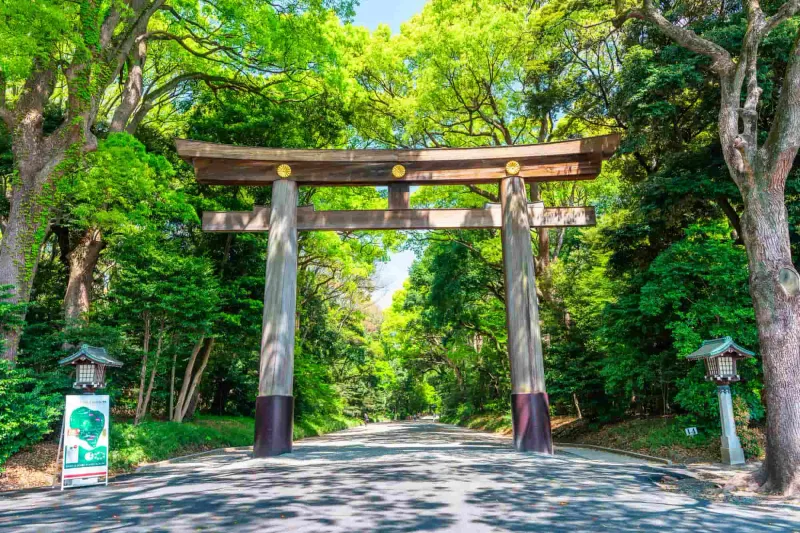
Hidden within a lush forest in the heart of Tokyo, Meiji Shrine offers a peaceful escape from the surrounding urban chaos. Unlike many colorful Japanese shrines, this Shinto sanctuary dedicated to Emperor Meiji and Empress Shoken embraces natural wood tones and simplicity.
The approach through the towering torii gate and along gravel paths lined with 100,000 trees creates a sense of leaving the city behind. Many visitors miss the Inner Garden (requires a small fee), where Emperor Meiji himself designed an iris garden for his beloved empress.
If you’re lucky, you might witness a traditional Japanese wedding procession at the shrine – the bride in her white kimono and ornate headdress, sheltered under a red umbrella as she walks with her groom to the ceremony hall.
8. Ryoan-ji
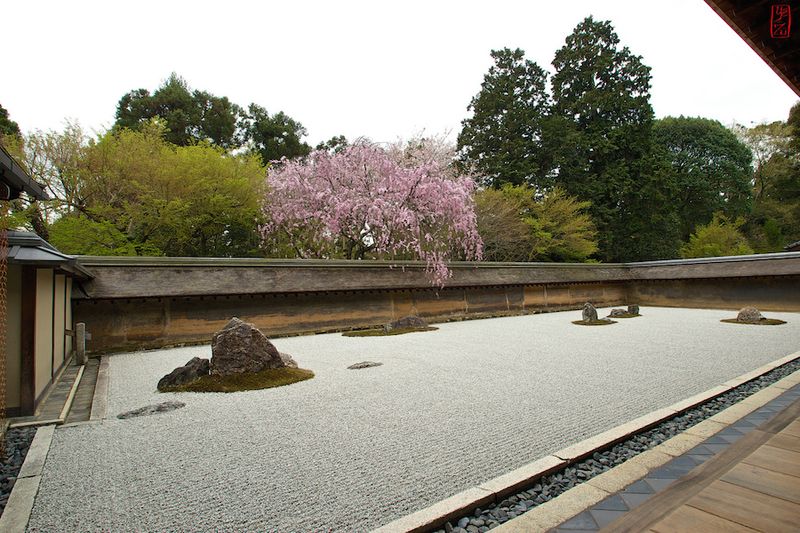
World-famous for its zen rock garden, Ryoan-ji challenges visitors to find meaning in simplicity. This rectangular plot contains just 15 rocks arranged on white gravel – yet from any viewing angle, you can only see 14 at most, reminding us that complete enlightenment remains elusive.
Monks rake the gravel daily into precise patterns representing rippling water, while the rocks themselves might symbolize islands, mountains, or tiger cubs crossing water – interpretations vary widely. The garden’s design dates back to the late 15th century, making it one of Japan’s oldest surviving zen gardens.
After contemplating the rock garden, explore the temple grounds which include a lovely pond garden with stone bridges and water lilies. Spring brings cherry blossoms, while autumn transforms the landscape with fiery maple leaves.
9. Nikko Toshogu Shrine
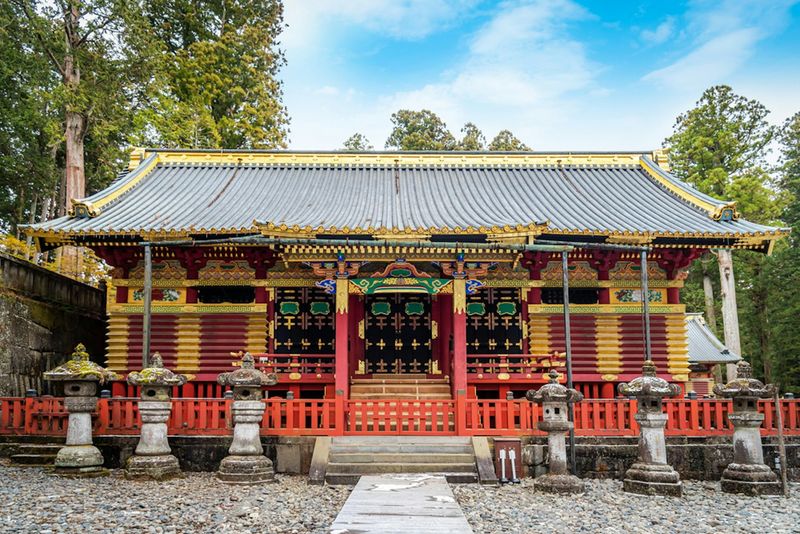
Lavish gold leaf, vibrant colors, and intricate carvings make Nikko Toshogu utterly different from Japan’s typically minimalist shrines. Built in 1617 to honor Tokugawa Ieyasu, the founder of the Tokugawa shogunate, this elaborate complex showcases over 5,000 carvings created by 15,000 craftsmen.
The famous “see no evil, speak no evil, hear no evil” monkey carving originated here, adorning a stable building. Another must-see is the Sleeping Cat carving, symbolizing peace in a country once torn by civil war.
When you visit, don’t rush through the grounds like many tour groups do. Take time to appreciate smaller details like the dragon ceiling painting in the Honjido Hall, where a specially positioned wooden block creates an echo effect called “the crying dragon” when clapped beneath it.
10. Byodo-in
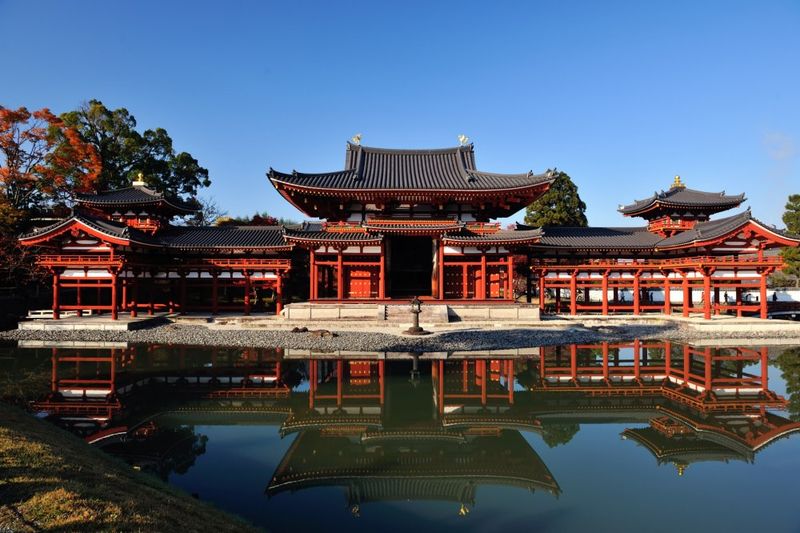
Made famous by its appearance on the 10-yen coin, Byodo-in’s Phoenix Hall seems to float above its reflecting pond like something from a fairytale. Originally built as a nobleman’s villa in 998, it was converted to a Buddhist temple in 1052.
The hall’s name comes from the two phoenix statues perched on its roof, while inside sits a spectacular 11-faced statue of Amida Buddha. Modern visitors might recognize this temple from scenes in the movie “The Last Samurai” or from its replica in Hawaii.
Though smaller than many famous Japanese temples, Byodo-in packs incredible beauty into its compact grounds.
The recently renovated museum houses temple treasures including 52 wooden bodhisattva statues, each with a different musical instrument and facial expression – masterpieces of Japanese Buddhist art.
11. Zenko-ji
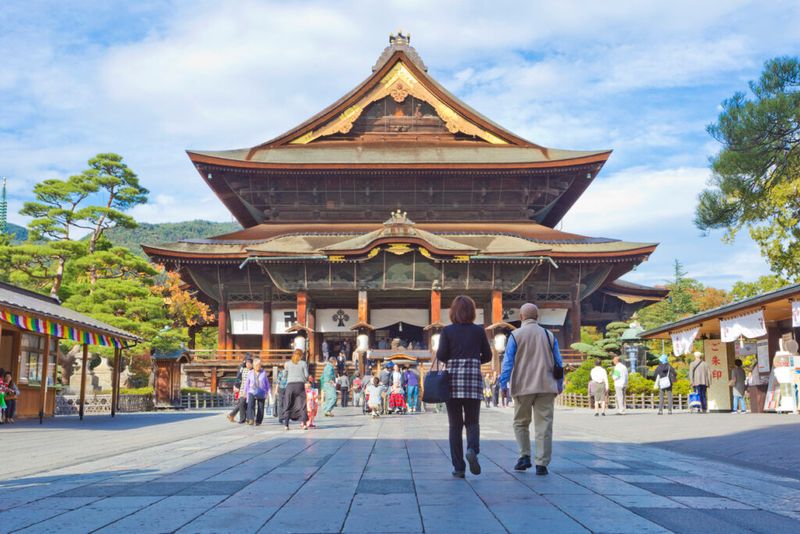
Founded in the 7th century, Zenko-ji houses the first Buddhist statue ever brought to Japan, though the original remains hidden from public view. Instead of focusing on beautiful architecture or garden design, this temple emphasizes spiritual experience through unique rituals.
During the “O-kaidan-meguri,” visitors descend into a completely dark passage beneath the main altar. While feeling your way through absolute darkness, you’re meant to search for the “key to paradise” – a metal key attached to the wall that, when touched, is said to bring salvation.
Monks perform a morning ceremony daily before dawn, allowing visitors to witness traditional Buddhist rituals that have remained unchanged for centuries. Unlike many Japanese temples, Zenko-ji welcomes worshippers of all Buddhist sects and has always allowed women on its grounds.
12. Daitoku-ji
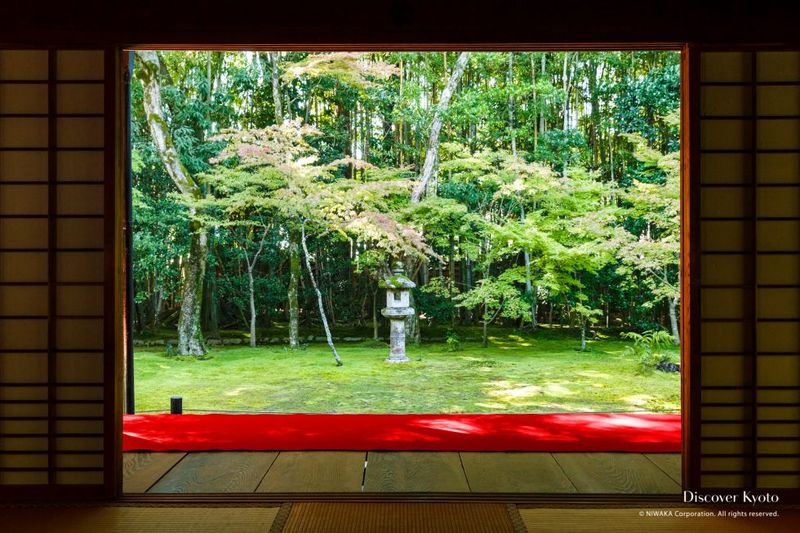
Rather than a single temple, Daitoku-ji is actually a complex of separate Zen temples, each with its own stunning gardens and unique character. Founded in 1315, this temple compound became the headquarters of the Rinzai sect of Zen Buddhism.
Four of the sub-temples are regularly open to the public, while others open seasonally or require advance reservations. Daisen-in’s famous rock garden depicts a river journey from turbulent mountains to the calm ocean, all using only stones and gravel.
Ryogen-in houses Japan’s smallest rock garden – just one square meter containing seven tiny stones. The temple’s tatami rooms overlook five different zen gardens, each expressing different philosophical concepts.
Unlike crowded tourist temples, Daitoku-ji maintains a contemplative atmosphere where you can experience authentic Zen meditation.
13. Kotoku-in (Great Buddha of Kamakura)
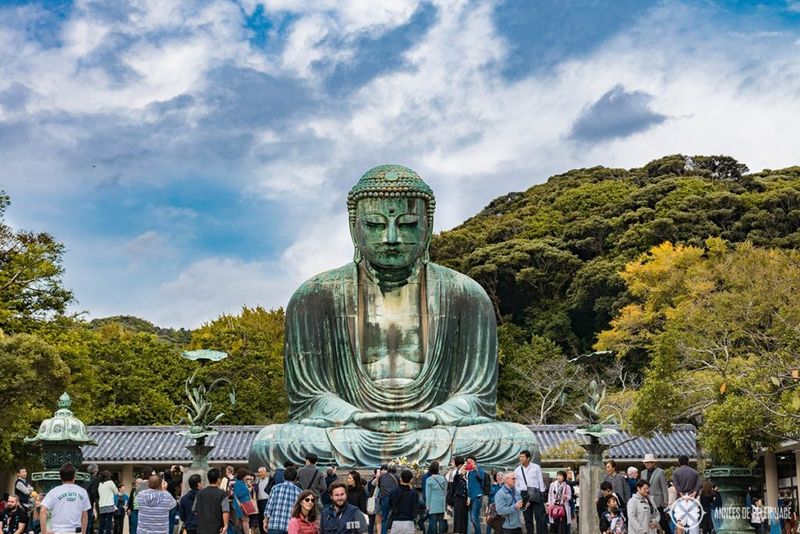
Sitting serenely under open skies, the Great Buddha of Kamakura has weathered typhoons, tsunamis, and centuries of history since its creation in 1252. This 13.35-meter bronze Buddha statue originally sat inside a wooden temple hall until the building was washed away by a tsunami in 1498.
Unlike most Buddhist images in Japan, you can actually go inside this Buddha! For a small fee, enter through a door at the back and climb into the hollow bronze interior to see how this masterpiece was constructed – an experience that connects you directly with medieval Japanese craftsmanship.
The Buddha’s expression embodies peaceful meditation, with half-closed eyes and a slight smile that seems to change depending on your viewing angle. His right hand is raised in the “fear not” gesture, while his left rests open on his lap.
14. Kofuku-ji
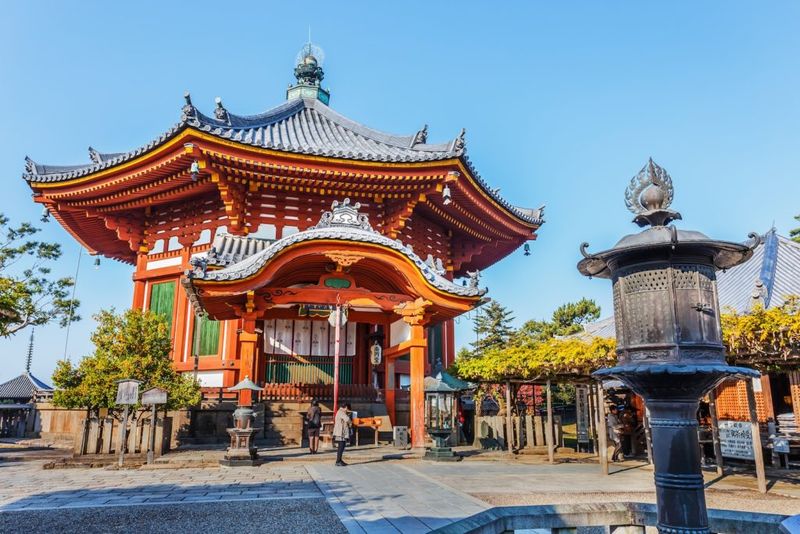
Five-storied pagodas punctuate the skyline at Kofuku-ji, one of Japan’s most historically significant temple complexes. Founded in 710, this temple wielded enormous political power for centuries as the family temple of the influential Fujiwara clan.
The temple’s National Treasure Museum houses some of Japan’s most important Buddhist art, including the six Thousand-Armed Kannon statues and the hauntingly beautiful dry-lacquer Ashura statue with its three faces showing different emotions.
These masterpieces showcase why Japanese Buddhist sculpture is considered among the world’s finest. Though much of the original complex was destroyed in fires over the centuries, recent reconstruction efforts have restored buildings to their former glory.
The Eastern Golden Hall, rebuilt in 2018 after being lost for 300 years, now gleams as it did in ancient times.
15. Tenryu-ji
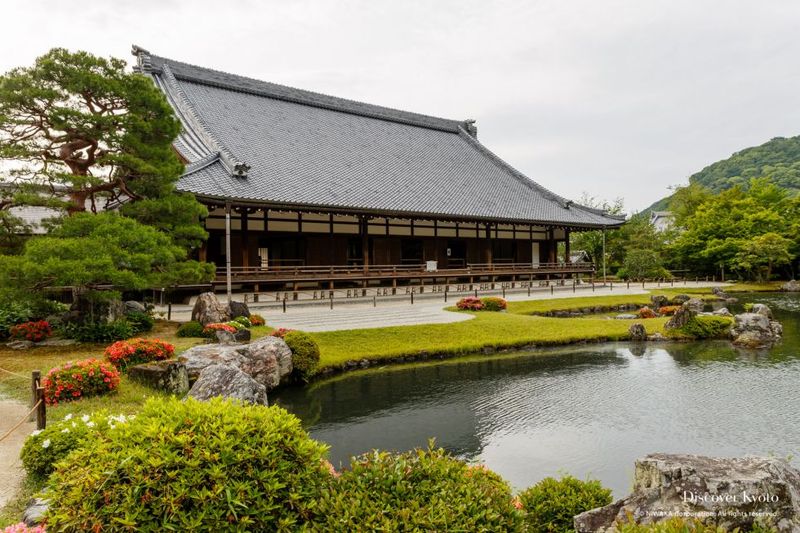
Wandering through Tenryu-ji’s Zen garden feels like stepping into a masterfully composed landscape painting. Created in 1339 by the garden designer Muso Soseki, this garden pioneered the “borrowed scenery” technique by incorporating the Arashiyama mountains into its design.
The temple’s Sogenchi Pond Garden remains largely unchanged since its creation, making it one of Japan’s oldest surviving landscape gardens. Dragons, which give the temple its name (“Heavenly Dragon Temple”), appear in ceiling paintings throughout the buildings.
After exploring the main buildings, follow the path behind the temple through a magnificent bamboo grove that rustles and creaks in the wind. This bamboo forest has become one of Kyoto’s most photographed spots, though few visitors realize it originally belonged to the temple grounds.
16. Enryaku-ji
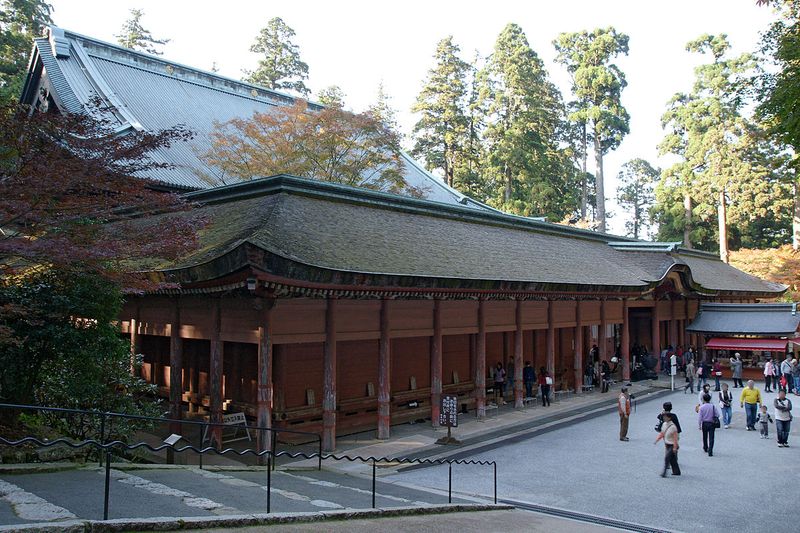
Perched atop sacred Mount Hiei, Enryaku-ji once commanded an army of warrior monks so powerful they influenced imperial politics for centuries. Founded in 788 by the monk Saicho, this sprawling temple complex became the headquarters of the Tendai sect of Buddhism.
At its height, Enryaku-ji encompassed over 3,000 buildings before warlord Oda Nobunaga burned most of them in 1571 to destroy the monks’ political and military power. Today’s restored buildings span three areas connected by forested trails, offering both spiritual and natural experiences.
The most impressive structure is the massive Konpon Daito pagoda with its unusual design – square outside but round inside, symbolizing the reconciliation of different philosophical concepts. On clear days, the temple complex offers stunning views over Lake Biwa and Kyoto city.
